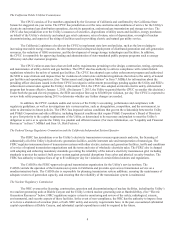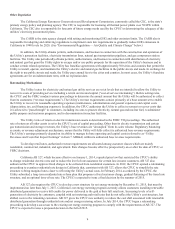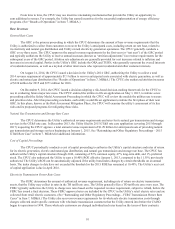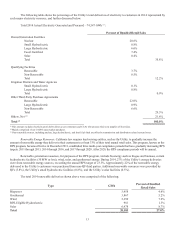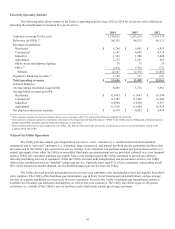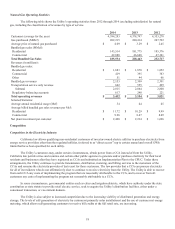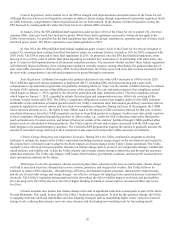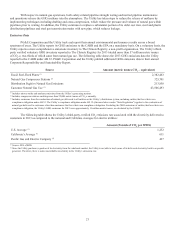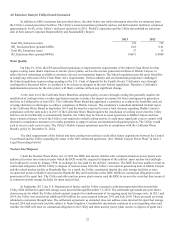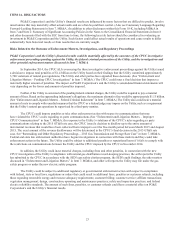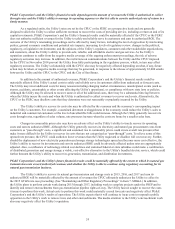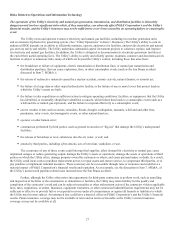PG&E 2014 Annual Report Download - page 26
Download and view the complete annual report
Please find page 26 of the 2014 PG&E annual report below. You can navigate through the pages in the report by either clicking on the pages listed below, or by using the keyword search tool below to find specific information within the annual report.
18
Natural Gas Operating Statistics
The following table shows the Utility’s operating statistics from 2012 through 2014 (excluding subsidiaries) for natural
gas, including the classification of revenues by type of service.
2014 2013 2012
Customers (average for the year) 4,394,283 4,378,797 4,353,278
Gas purchased (MMcf) 202,215 240,414 247,792
Average price of natural gas purchased $ 4.09 $ 3.29 $ 2.45
Bundled gas sales (MMcf):
Residential 143,514 181,775 185,376
Commercial 42,080 46,668 47,341
Total Bundled Gas Sales 185,594 228,443 232,717
Revenues (in millions):
Bundled gas sales:
Residential $1,683 $1,870 $1,852
Commercial 419 395 383
Other 51 44 66
Bundled gas revenues 2,153 2,309 2,301
Transportation service only revenue 662 555 499
Subtotal 2,815 2,864 2,800
Regulatory balancing accounts 617 240 221
Total operating revenues $ 3,432 $ 3,104 $ 3,021
Selected Statistics:
Average annual residential usage (Mcf) 34 44 45
Average billed bundled gas sales revenues per Mcf:
Residential $ 11.72 $ 10.29 $ 9.99
Commercial 9.96 8.47 8.09
Net plant investment per customer $2,468 $2,234 $1,696
Competition
Competition in the Electricity Industry
California law allows qualifying non-residential customers of investor-owned electric utilities to purchase electricity from
energy service providers other than the regulated utilities, (referred to as “direct access”) up to certain annual and overall GWh
limits that have been specified for each utility.
The Utility’s customers may, under certain circumstances, obtain power from a CCA instead of from the Utility.
California law permits cities and counties and certain other public agencies to generate and/or purchase electricity for their local
residents and businesses after they have registered as CCAs and submitted an Implementation Plan to the CPUC. Under these
arrangements, the Utility continues to provide transmission, distribution, metering, and billing services to the customers of the
CCAs and remains the electricity provider of last resort for those customers. The law provides that a CCA can procure electricity
for all of its residents who do not affirmatively elect to continue to receive electricity from the Utility. The Utility is able to recover
from each CCA any costs of implementing the program that are reasonably attributable to the CCA, and to recover from all
customers any costs of implementing the program not reasonably attributable to a CCA.
In some circumstances, governmental entities such as cities and irrigation districts, which have authority under the state
constitution or state statute to provide retail electric service, seek to acquire the Utility’s distribution facilities, either under a
consensual transaction, or via eminent domain.
The Utility is also subject to increased competition due to the increasing viability of distributed generation and energy
storage. The levels of self-generation of electricity by customers (primarily solar installations) and the use of customer net energy
metering, which allows self-generating customers to receive bill credits at the full retail rate, are increasing.


